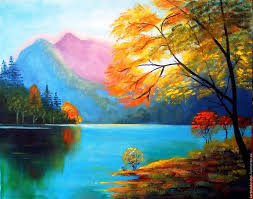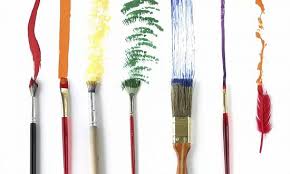EXCURSION TO THE WORLD OF GRAPHICS
 Graphics is the art of drawing. A graphic image, as a rule, consists of lines, strokes, dots, etc. By its nature, a graphic image is more conventional than a pictorial one, although the graphic and expressive means of graphics are much the same as in painting. Unlike painting, the color in the graphic is predominantly one (usually black), but there is a graphic that also uses a different color. The graphic also uses stained drawing – a pictorial tool widely used, for example, in the graphic sheets of Mesereel and the Prophet.
Graphics is the art of drawing. A graphic image, as a rule, consists of lines, strokes, dots, etc. By its nature, a graphic image is more conventional than a pictorial one, although the graphic and expressive means of graphics are much the same as in painting. Unlike painting, the color in the graphic is predominantly one (usually black), but there is a graphic that also uses a different color. The graphic also uses stained drawing – a pictorial tool widely used, for example, in the graphic sheets of Mesereel and the Prophet.
Graphic artists can create not only separate sheets, but also entire series of drawings, united by a common theme. Without resorting to the help of color, graphics – art unusually laconic with its avaricious means can and does give pictures of life no less significant in terms of ideology and aesthetics than painting.
Graphics can be divided into easel and applied. Easel graphics, such as engraving, have independent significance. Applied genres are those genres of graphics that are associated with other activities or creativity, such as industrial graphics or illustration. Graphic genres include all types of graphic drawing — a book illustration, a poster, a caricature, industrial graphics, etc. Each of these genres has a great penetration depth into the depicted phenomenon.
Graphics is an unusually operational art, it follows in the wake of the events of life itself and every day more and more it enters not only social life, but also the life of people.
Book graphics are not only the design of the book (cover and dust jacket, title, drawing at the beginning and end of the text, etc.). The illustration sets the task to reveal the ideas and images of works, inwardly correspond to its deep content. The illustrations created by D. Shmarinov to the “War and Peace” by L. Tolstoy, O. O. Vereisky to the “Quiet Don” by M. Sholokhov, and the Kukryniksy to the works of A. P. Chekhov enriched our understanding and emotional perception of the unfading images of these works. However, a book illustration is not a simple copy of a literary text translated into a graphic language, but an independent work of art, the result of genuine creativity. Extraordinarily interesting in this regard is a series of drawings by V. Prokorov “Mayakovsky. Abroad”. In them, the artist does not strive for the simple transfer of the poet’s images in graphic language. The prophets show the characters and situations of Mayakovsky’s foreign works as the poet himself would have seen them in our time, traces the images of Mayakovsky in dynamics, penetrates the prototypes of the poet’s creations and presents them to the viewer in the form that they found thirty years later. So, in one of the drawings of Prokorov, a huge black man waved a piece of chain and, looking at him, you believe that he will gain freedom, the old world of colonialism and racism cannot stand against him. The drawings are fully consistent with the meaning of the verses, the Prophets delves deeply into the images of Mayakovsky and at the same time in his drawings – the spirit of our time.
A special place in the art of graphics is occupied by a poster – large journalistic, propaganda art, characterized by clarity, catchiness, brightness, a combination of drawing and literary text – a military response by means of fine art to the most acute and significant pressing political issues.
Expanding the circle of reproduced phenomena of life, great semantic content, the capacity of a work is an important trend in modern graphics. Both in easel graphics and in art illustrations, in the frame of one sheet, different, albeit related to each other, plots or different faces of the same plot begin to fit. So G. Poplavsky decided only one sheet “Family” from the series “Memory” almost like a triptych. In the center of the sheet is a man and a woman, clinging to each other in a farewell hug. On the left side of the sheet is a column of partisans leaving the village, on the right there are trenches. Here is the development of events, and the vision of these events by the main characters.
The art of graphics also includes caricature and industrial graphics.
Graphics include various types of reproduction of the drawing: engraving – the imprint of the drawing from the engraving board; lithography – an imprint from a stone or with a metal plate replacing it.




